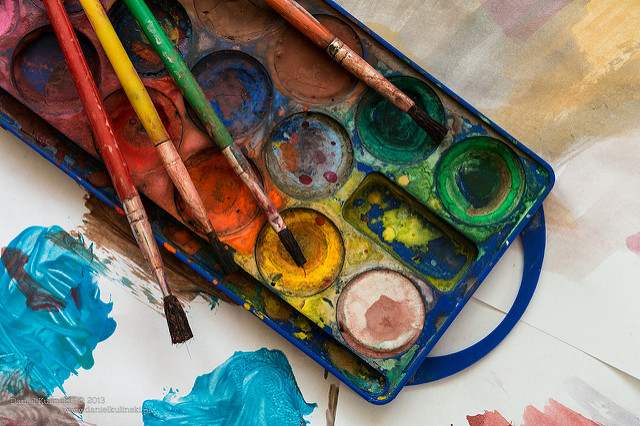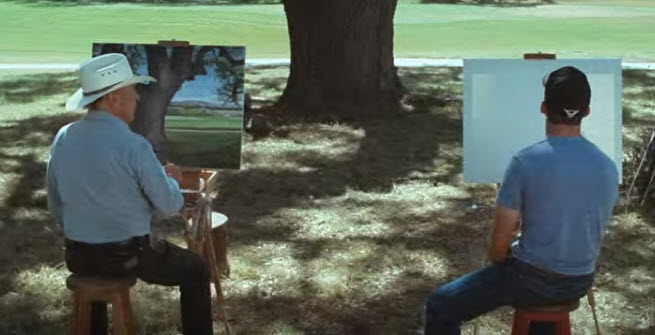The PGA tour, professional golfer’s association tour, is winding down for another year, over the next few weeks.
I golf. Not a lot; enough, though, that I’m motivated, after a bad round (not infrequent), to go out, and do it again. No pain, no gain? It’s the psychological side of golf that has me hooked. (I’ve written about it before, e.g., tips for visualizing resolution from the world of golf) I keep going back, hoping to experience the following scenario (aka dream):
A golf story
I walk up to my ball. The green, the target, is 200 metres away. The pin is tucked into the back corner of the green. There is a tree on one side of the green. Water on the other. The wind is howling. What to do?
I study the scene. I see where I want the ball to go. I feel what I must do to make it happen. I trust what I see and feel. Now, its time to commit.
Whack …..The ball takes flight. It’s headed for the tree. Oh no. Then, it curves back, accounting for the wind. The ball lands softly, on the green, and rolls up close to the pin,
“Wow”, says my golfing partner. “That was Picasso!”
Just like Picasso
Yes, that was Picasso. In my dreams.
 Like the famous painter Picasso, a pro golfer (not I) paints a vivid picture in her mind. She paints her shot. She can see the flight of the ball even before she hits it. She knows exactly where the ball must travel, to reach its target.
Like the famous painter Picasso, a pro golfer (not I) paints a vivid picture in her mind. She paints her shot. She can see the flight of the ball even before she hits it. She knows exactly where the ball must travel, to reach its target.
Like Picasso, the pro golfer can feel what has to be done to bring that picture to life. She can feel the swing that’s needed, to match the flight of the ball she saw in his mind. She knows how to do it and she can.
Like Picasso, the pro golfer trusts herself to execute what she sees and feels. She trusts herself to hit the shot that she saw and felt. She lets go of voices in her head that say she can’t do it. She commits to making it happen.
See it. Feel it. Trust it.
See it, feel it, trust it… is a strategy commonly used by sports psychologists. I first came across it in sport psychologist David Cook’s semi-spiritual book, Seven Days in Utopia: Golf’s Sacred Journey (subsequently made into a movie).
SEE – Really get focused out there on your target. See the path to your target.
FEEL – Feel the specific actions needed to reach your target.
TRUST – Trust yourself to do what have just seen and felt.
Being the master of your situation
The downhill ski racer sees the course in her mind, all the turns and jumps. She feels how it will be going down the hill; the fast turns, the slow ones, the dynamics of each jump, the sun and shade, the minute details. She trusts what she sees and feels, steps up to the starting gate, and commits. She paints the hill; Picasso!
The man is preparing an anniversary dinner for his wife. He can see it; the exotic meal, the fine china, the candlelight. He feels it; the recipe, the timings, the clothes he will wear, the manners. He trusts what he sees and feels and commits. He paints the evening; Picasso!
The conference speaker sees it: the story arc, the body of the speech, that ‘wow’ introduction and ‘leave them wanting more’ close. The speaker feels it; he words, the props, gestures, the pauses, the contrasts that give the speech life. And, the speaker trusts what they see and feel. She paints the audience; Picasso!
See it. Feel it. Trust it.
Reflections
One thing that especially intrigues me about the see-feel-trust model, is the feel part. This is the part that, in my mind, only works after patience and courage have been exercised; patience and courage to take the time and effort to learn and internalize a pattern (the skill, whatever it is).
Only after we’ve internalized the skill, can we have trust to fully commit, to let go, and go with our gut feel, in the moment of execution. And, if there is uncertainty, going with one’s gut feel may still be the best course of action!
How does what I want to do, truly feel?
I need to ask and answer that question, more.


Speak Your Mind